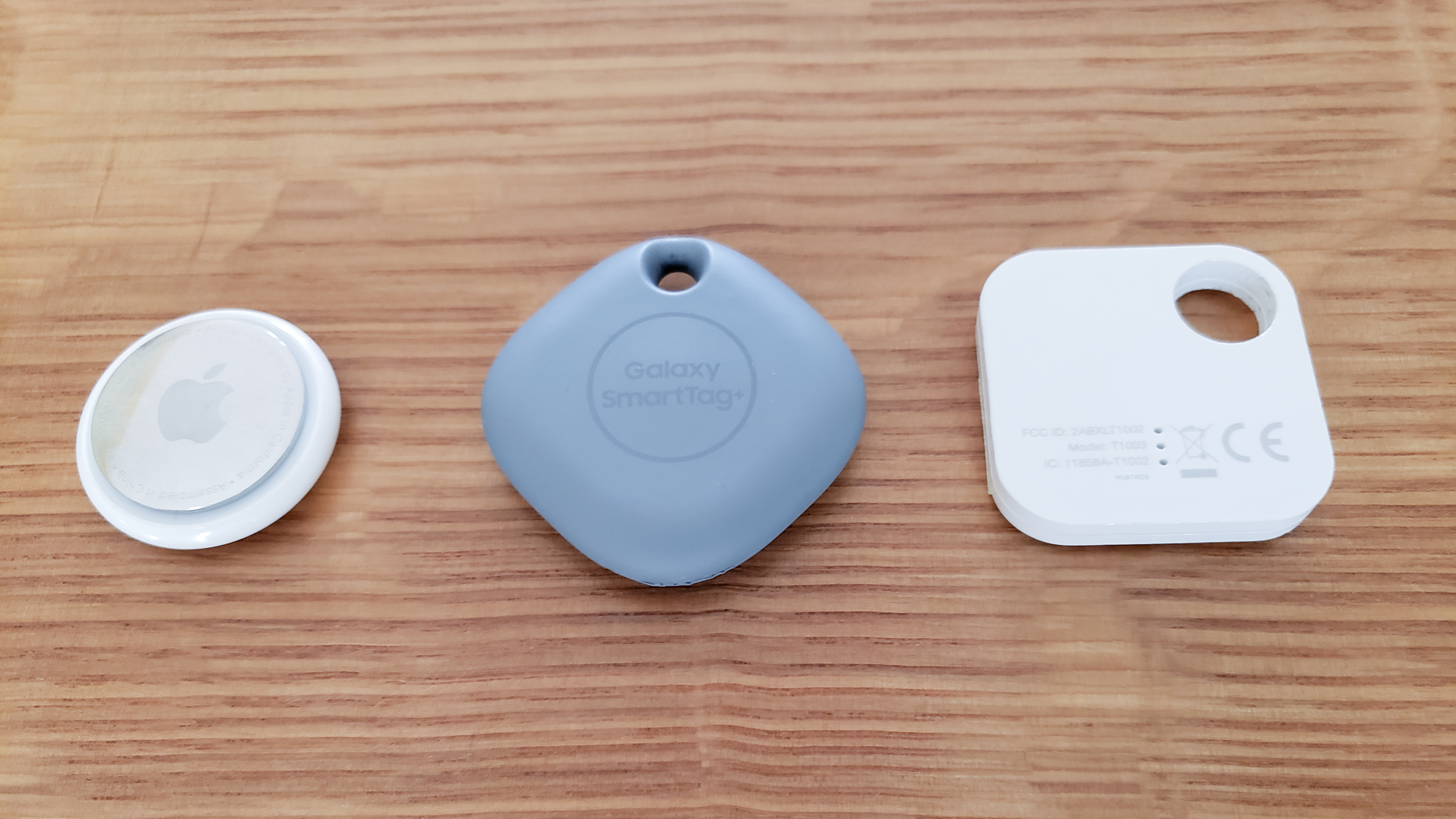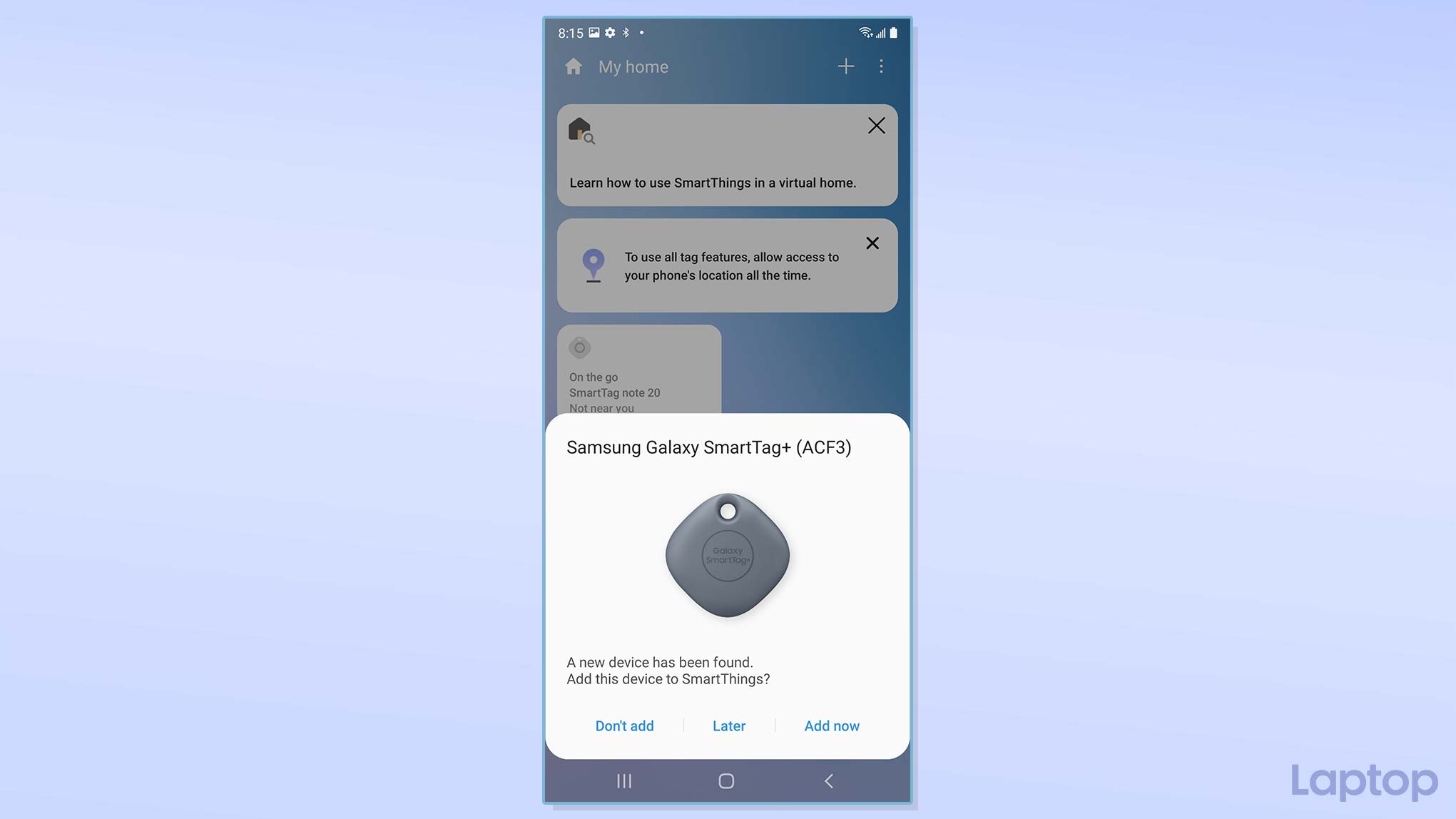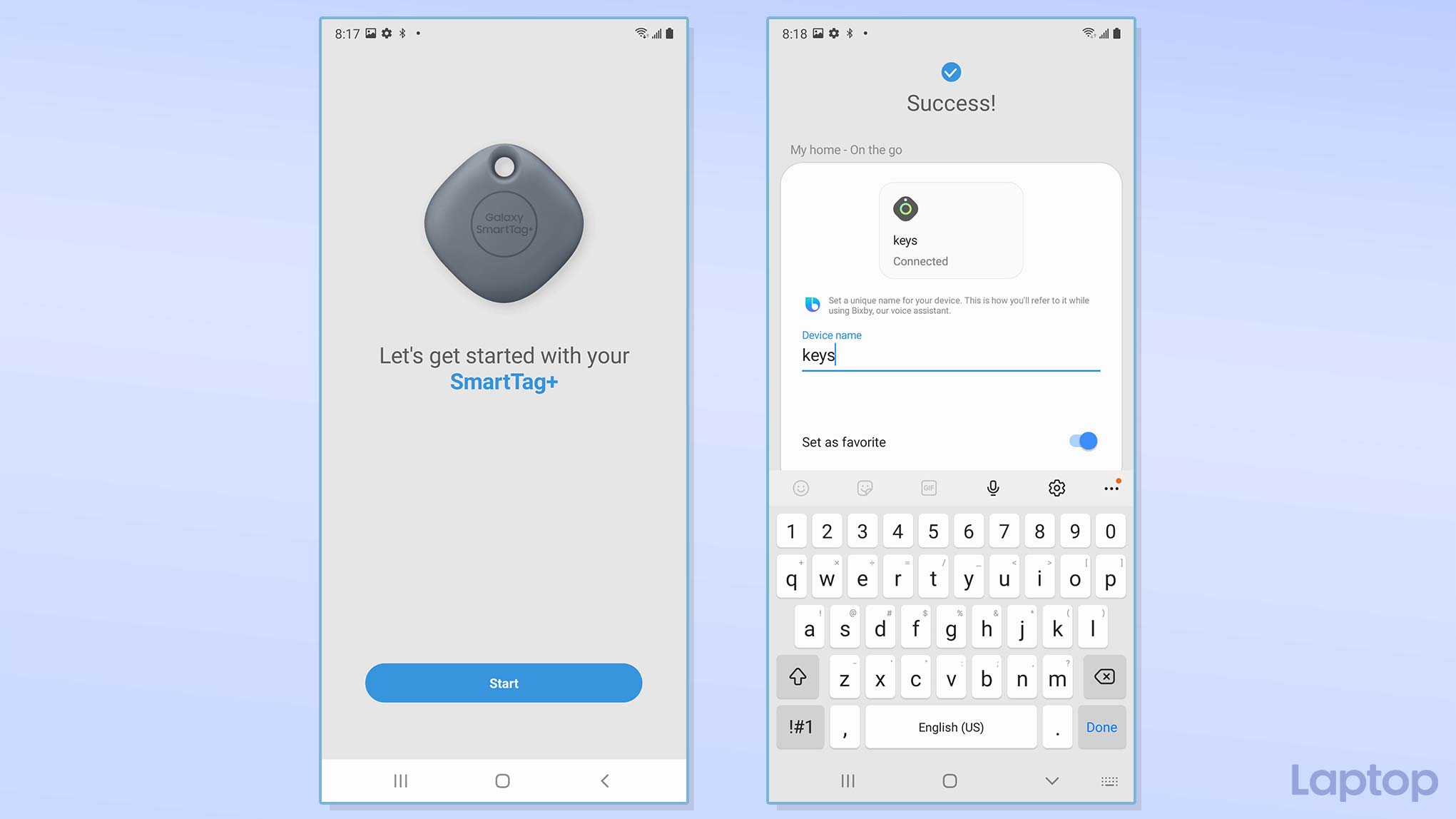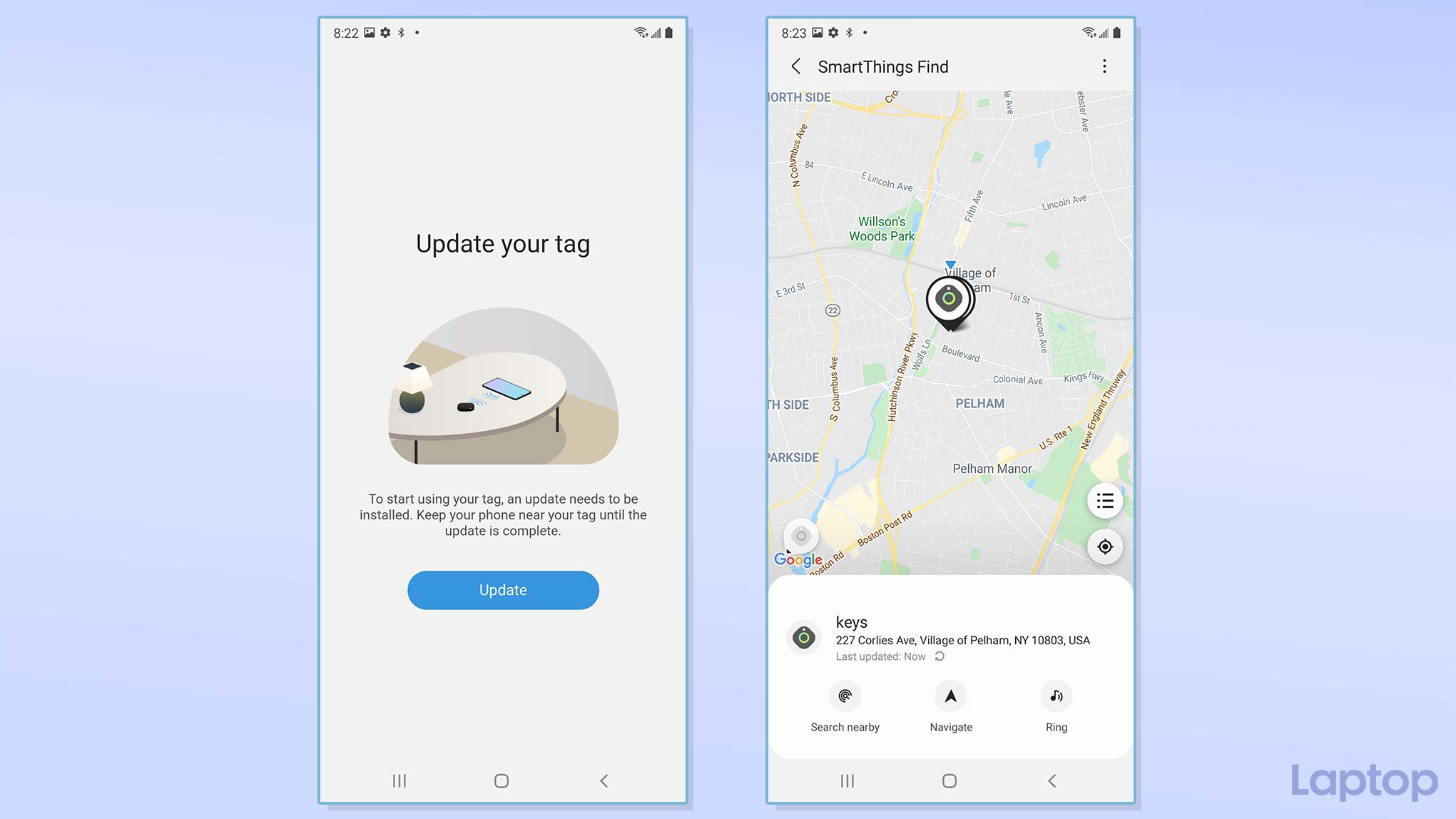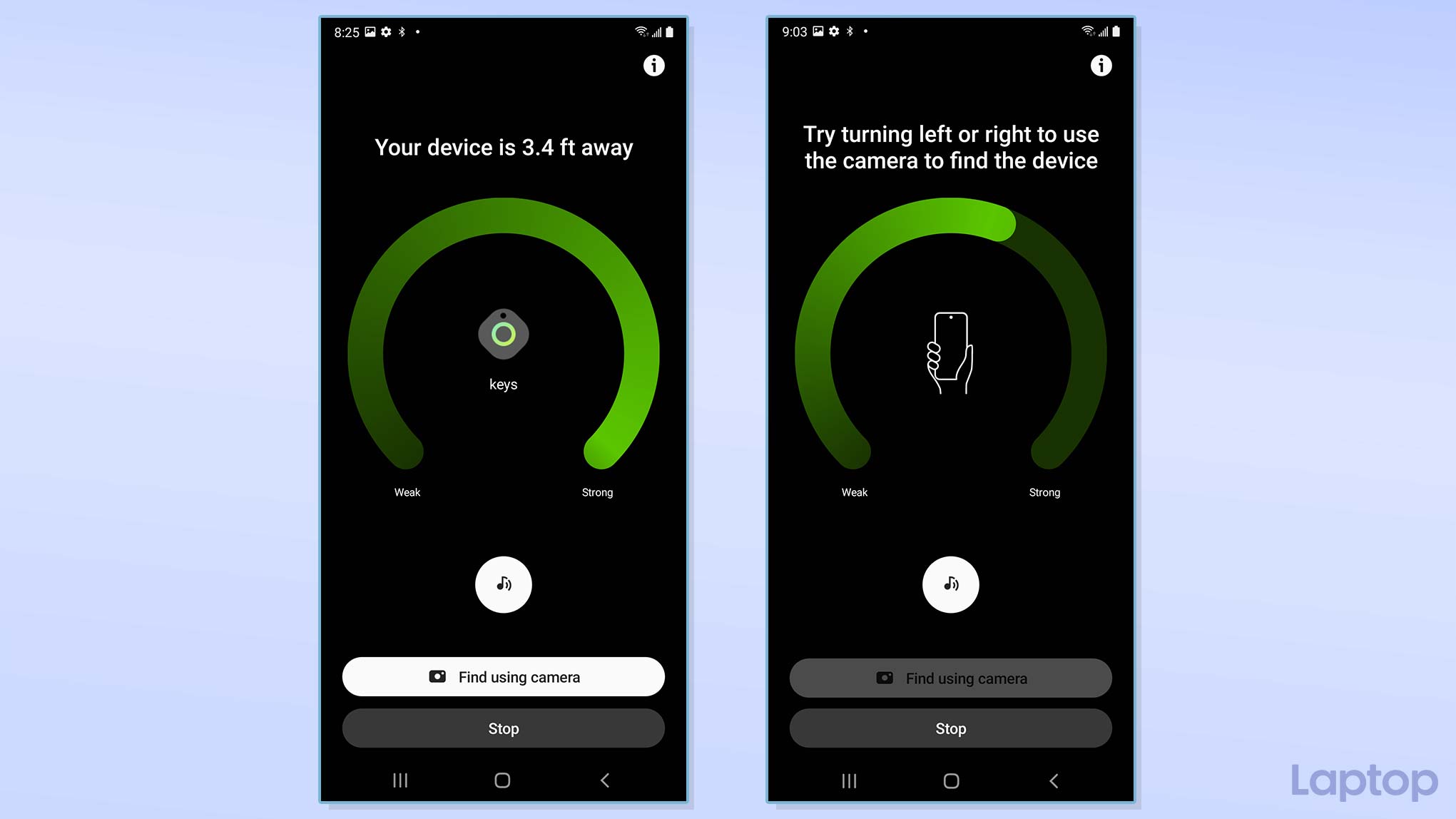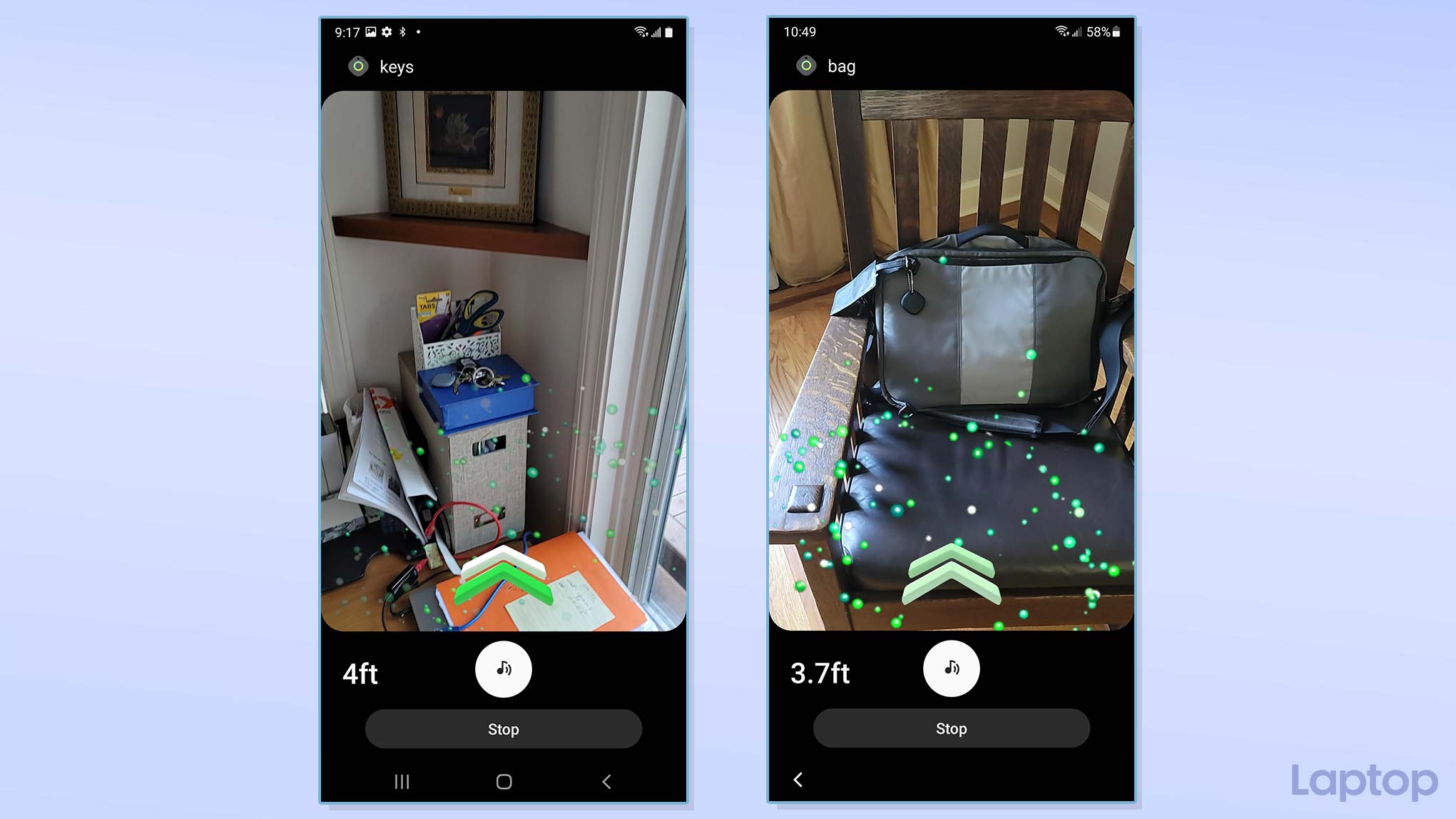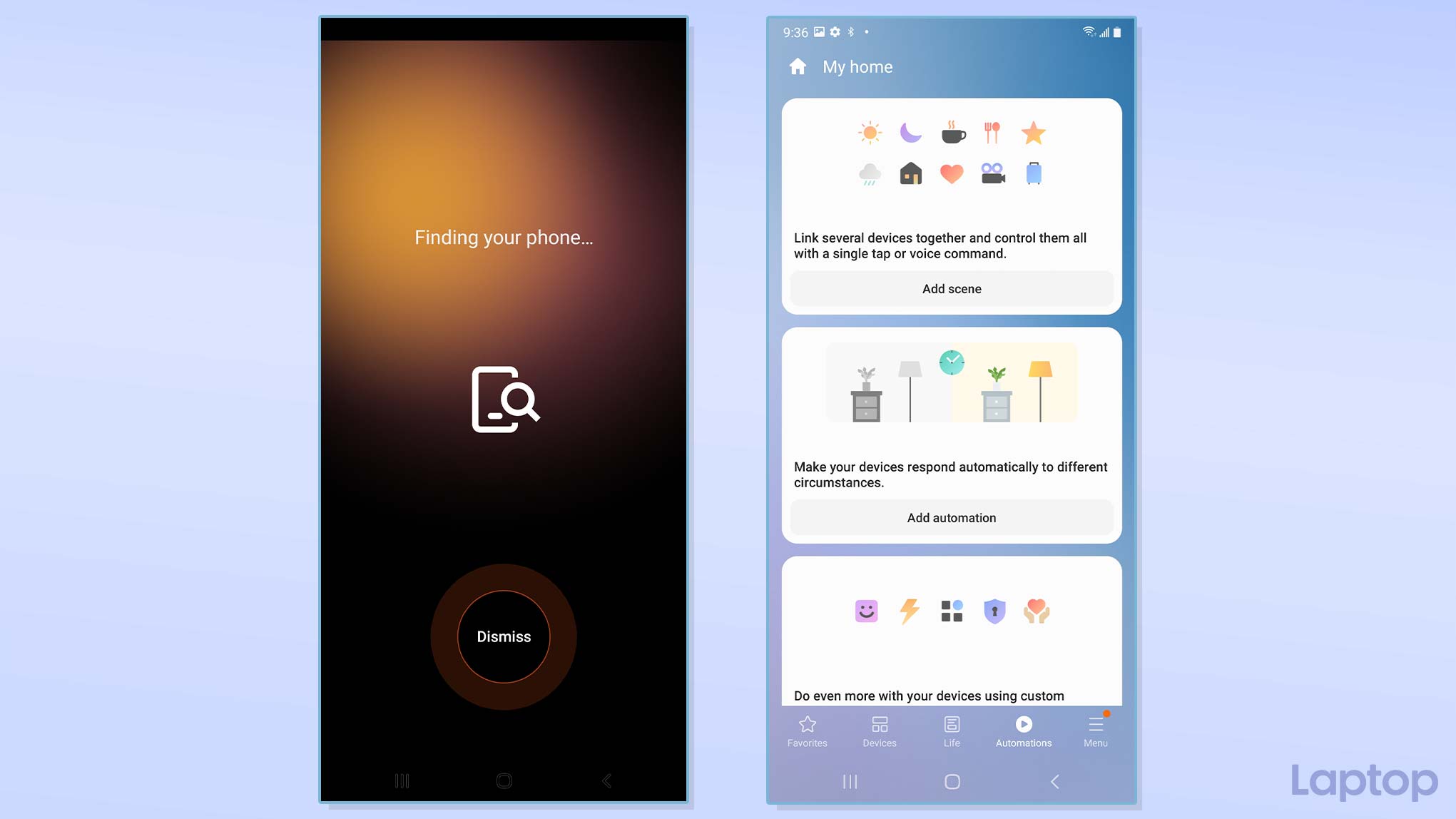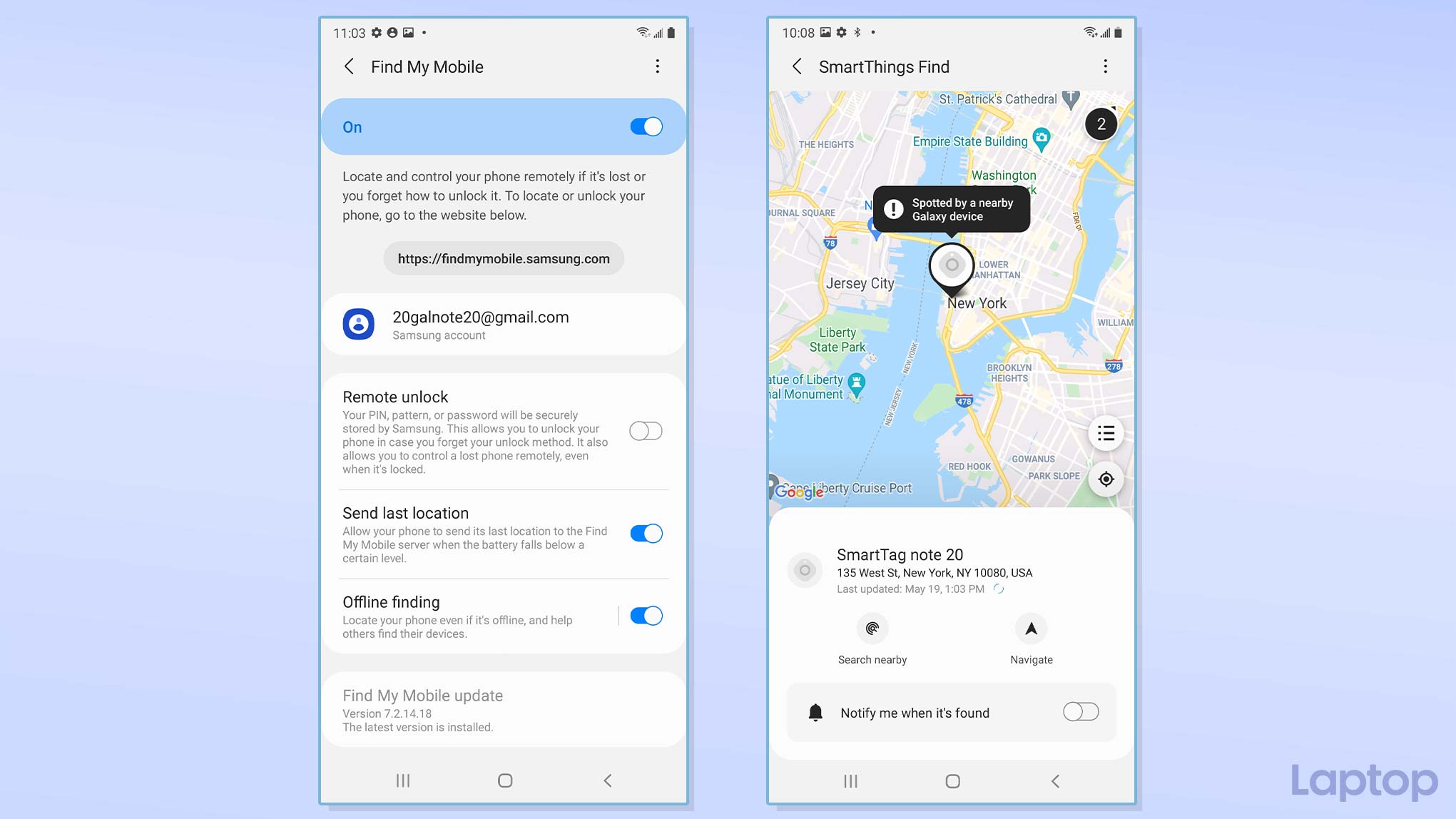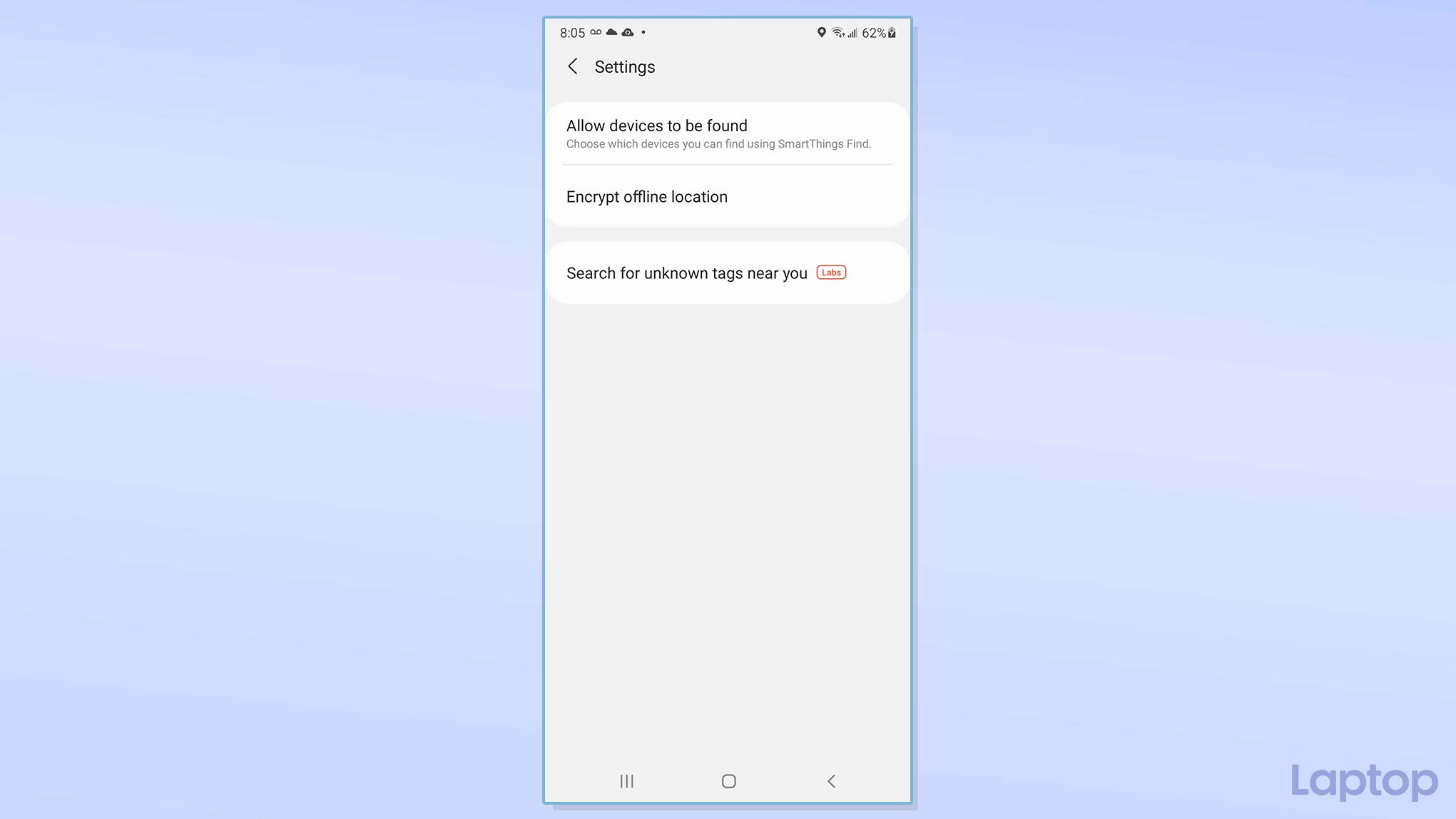Laptop Mag Verdict
Samsung’s Galaxy SmartTag Plus tracker uses a combination of Bluetooth and Ultra-Wide Band communications to help find lost items with a dash of augmented reality effects for good measure.
Pros
- +
Ultra-Wide Band and Bluetooth tracking
- +
Hole for keyring or luggage tag
- +
Augmented reality special effects
- +
Lots of customization potential
Cons
- -
Ultra-Wide Band tracking requires recent Samsung phone
- -
Bigger, heavier and more expensive than other tags
- -
Short battery life
Why you can trust Laptop Mag
Size: 1.6 x 1.6 x 0.4 inches
Weight: 0.5 ounce
Range: 105-feet
Battery: Replaceable CR2032
The Samsung Galaxy SmartTag Plus performs magic for the forgetful among us by tracking where the tag and your stuff end up. By employing a combination of Bluetooth and Ultra-Wide Band (UWB) technologies, the tag’s app can direct you to where the lost item is, show it on your phone’s screen, and it has the bonus of an augmented reality view when you’re close enough to touch it.
But at $40 each, the SmartTag Plus is more expensive than the competition, has a short battery life, and requires a recent Samsung phone to use the UWB effects. Still, the SmartTag Plus devices are a good way to track missing tagged items, regardless of whether they’re under a bed, stuck in a couch or left at a restaurant.
Samsung Galaxy SmartTag Plus pricing and availability
Samsung’s SmartTag Plus is available online at a variety of stores for $40 for a single tag or two for $65. They come in Black and Denim Blue. Samsung also sells the original SmartTag that uses Bluetooth (but not Ultra-Wide Band) technology to locate lost items; these sell for $30 each. You can compare that to the Apple AirTags which cost $29 each or four for $99. Tile products cost between $25 (for the Mate) and $35 (for the Pro).
Samsung Galaxy SmartTag Plus design
Like the original Galaxy SmartTag, the SmartTag Plus is square-shaped with rounded corners, but is slightly larger at 1.6 x 1.6 x 0.4 inches. The tags are roughly twice as large as the coin-sized Apple AirTags and much thicker than the Tile Mate tags.
At half an ounce, the SmartTag Plus is also heavier than the competition with the AirTag weighing in at 0.39 ounces, which is 22% lighter. Still, the SmartTag Plus easily fits into a pocket along with a set of keys, but it’s likely too thick for stashing in a wallet.
Made of polycarbonate plastic, the SmartTag Plus’s case has a textured surface, but lacks the flash of the AirTag’s mirror-like finish. Its matte surface and muted colors are aesthetically pleasing if a little understated. It’s not a fashion statement like the AirTag, which means you can’t engrave images or initials into it. However, that matte, textured surface should be more scratch-resistant.
Similar to its predecessor, the SmartTag Plus has a corner hole for attaching a keyring or an easy-to-lose umbrella. While you might need to supply a ball chain or carabiner to attach the tag to a bag or umbrella, it won’t spawn the accessory ecosystem necessary for the AirTag.
Sign up to receive The Snapshot, a free special dispatch from Laptop Mag, in your inbox.
The SmartTag Plus has something that AirTags don’t: a button on top. This allows the SmartTag Plus to signal a lost phone, trigger home automation devices, and even send an emergency text alert.
Like the AirTag, the SmartTag Plus uses a CR2032 battery, but rather than Apple’s claim of a year of use, Samsung says the same battery should last only five months. That adds up to more than twice as many annoying battery changes during its life. As you’ll soon see, when I was setting up a SmartTag Plus, its battery was nearly dead and I needed to replace it to continue configuring the device. The replacement battery only cost a few dollars and took a minute to change, but it was an annoyance I would rather have avoided.
With an IP53 rating, the tag is more susceptible to damage from water or dust than the Samsung Galaxy Note 20 I used, which carries an IP68 rating. It should be OK to take the SmartTag Plus out in the rain or to the beach, but it can’t stand up to being submerged in water. In other words, leave it onshore when swimming. By contrast, the AirTag’s IP67 rating means it can survive being submerged in up to a meter of water for 30 minutes.
Samsung Galaxy SmartTag Plus: How it works
The SmartTag Plus joins Apple’s AirTag as the only trackers that use a combination of Bluetooth and Ultra-Wide Band (UWB) technology to uncover your tag (and attached gear). Close up, the tag is located using ultra-precise UWB transmissions but as you get farther away from the tag, Bluetooth takes over.
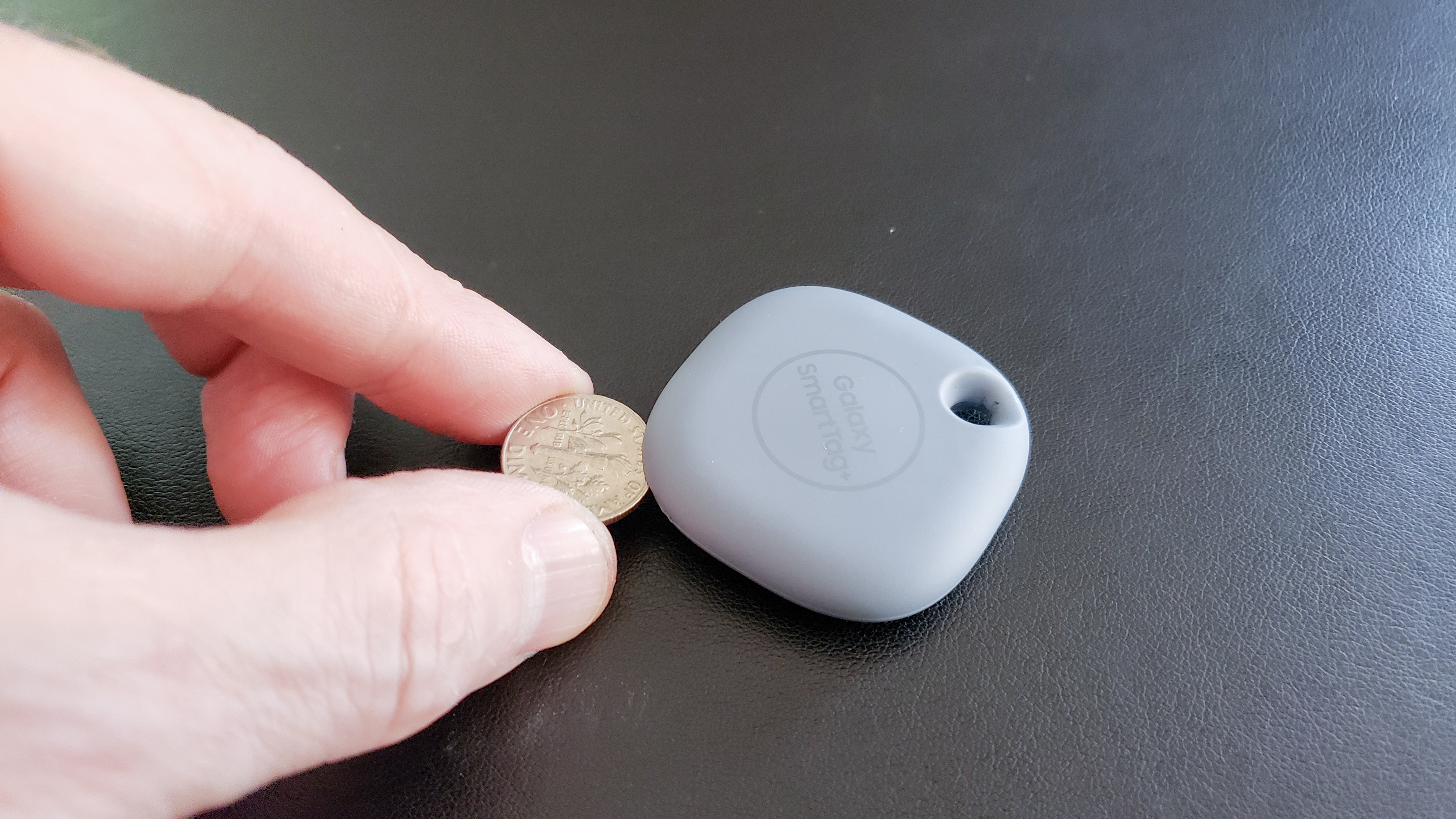
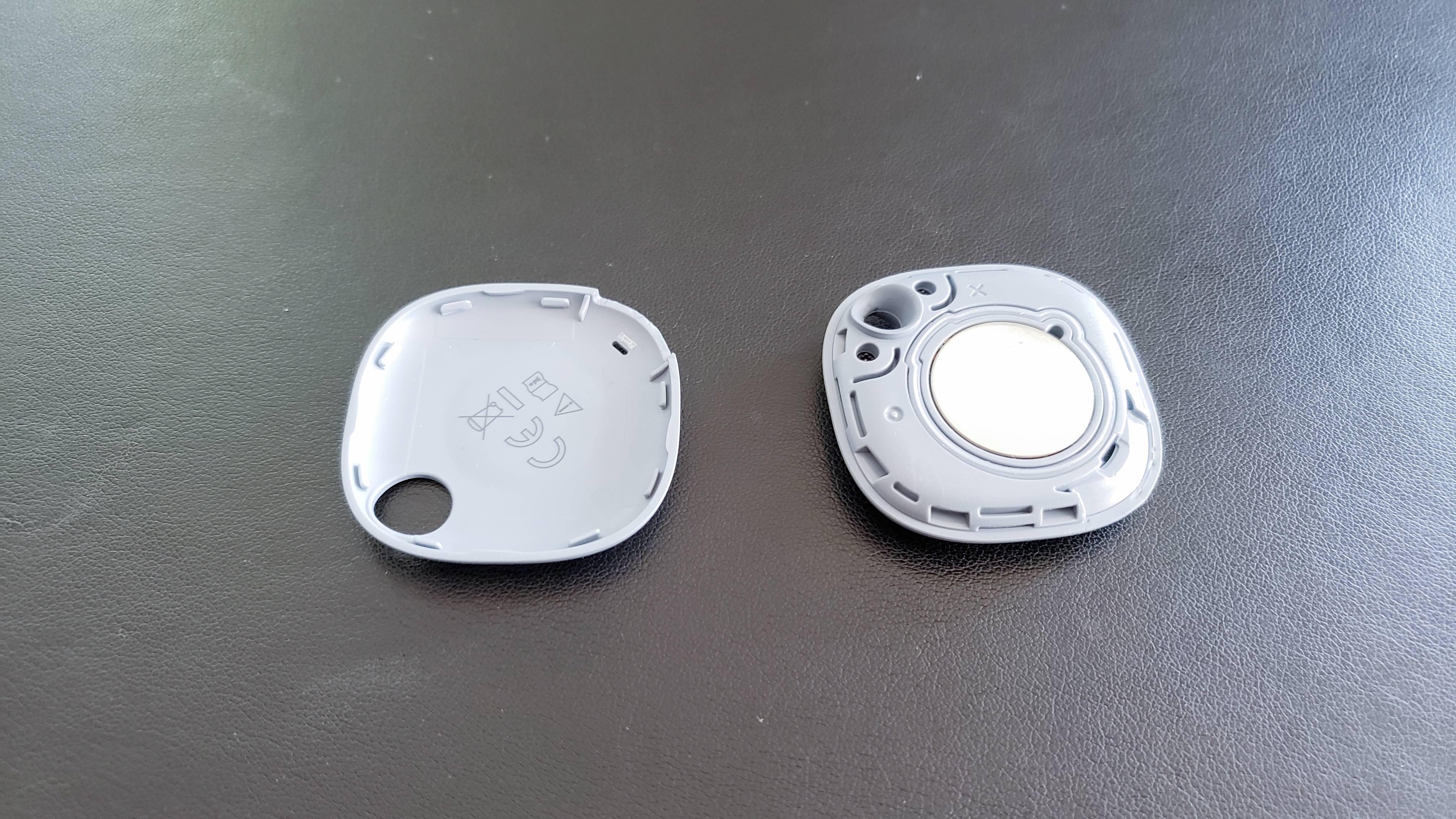
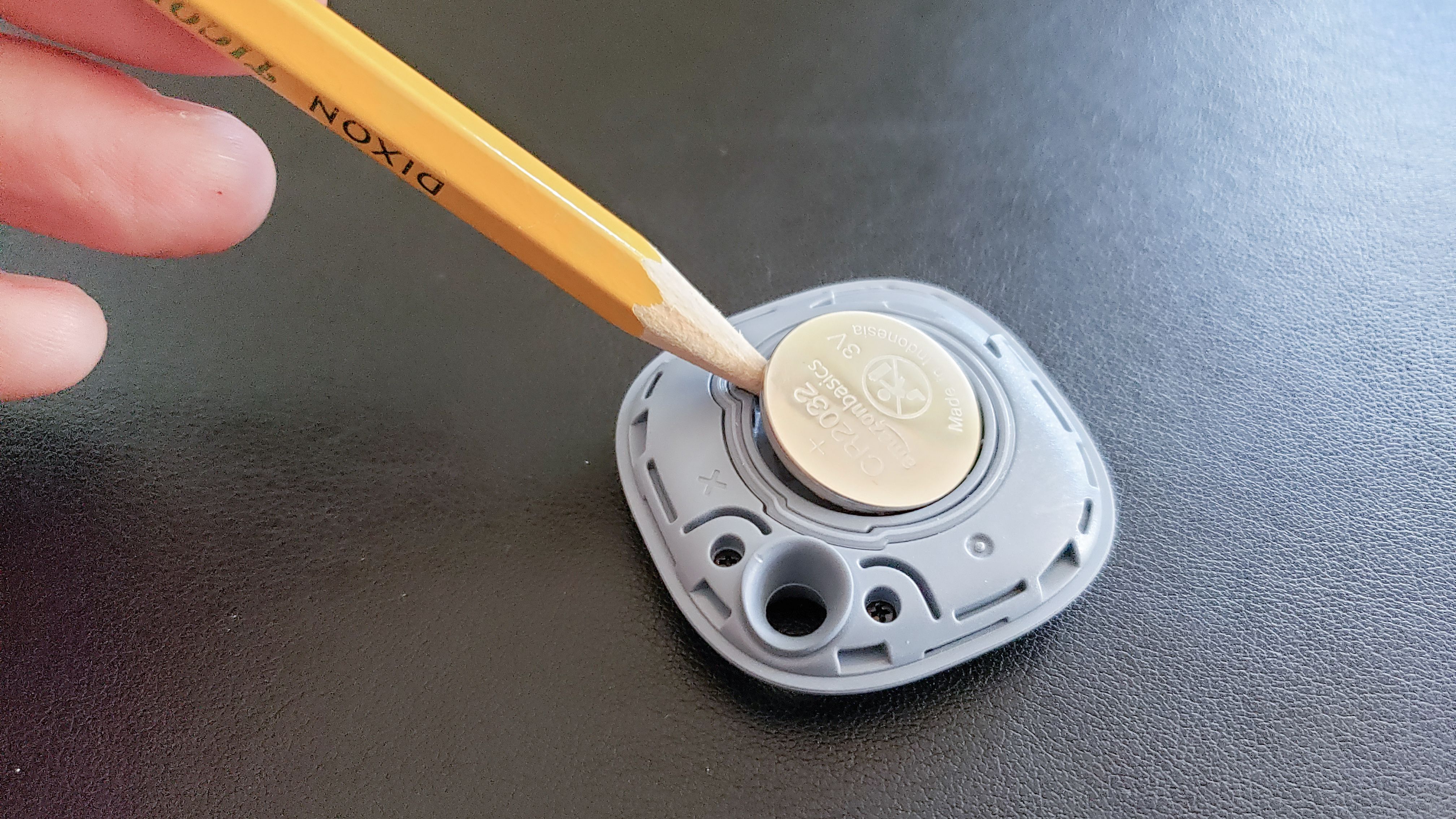
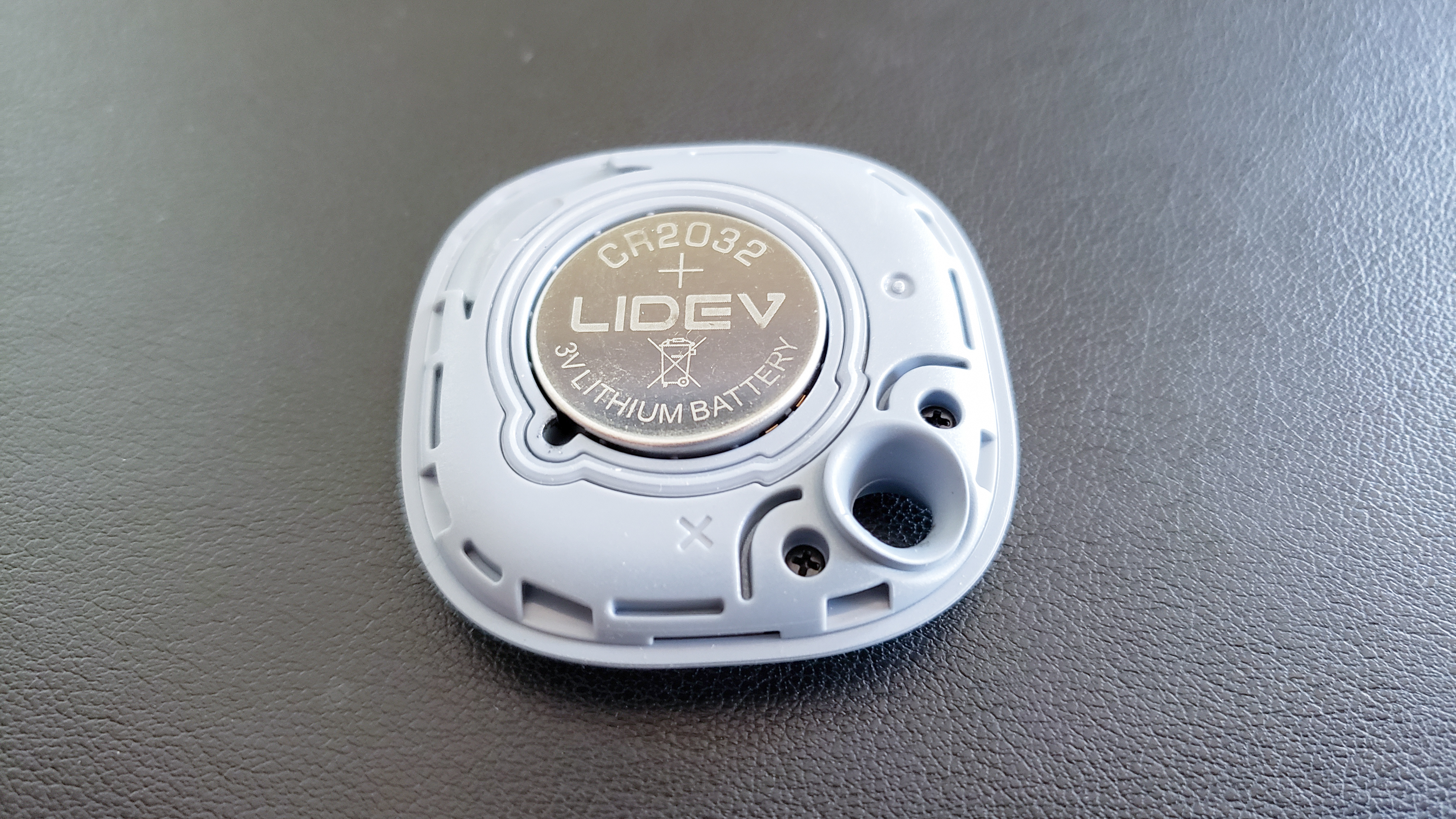

The SmartTag Plus is powered by a disposable CR2032 battery that Samsung rates to last 5 months of typical use. That’s less than half as long as Apple’s AirTags that use the same battery. In other words, plan on spending some time changing the SmartTag Plus’s battery. Happily, it takes less than a minute to change the battery. Here’s how.
Start by prying open the case with a dime or flat blade screwdriver.
Next, pop the old battery out. It might take a pencil point to pry it out.
Finally place the new battery in the slot with the “+” side up. When the electrical connection is made, the tag plays a tune.
Finish by squeezing the SmartTag Plus’s case between your fingers to snap the case shut. All done.
A key update to the Samsung SmartThings Find interface overlays the live output of your phone’s video camera on top of the direction-finding interface. This can make finding the tag easier. Each phone can track up to 200 SmartTags, which seems like overkill; iPhones are limited to tracking 16 AirTags.
Just as AirTags require an iPhone 12 to use UWB technology, the SmartTag Plus’s UWB technology requires a Samsung Galaxy Z Fold 2, Note 20 Ultra or S21+ phone. Otherwise, the phone relies exclusively on the tag’s Bluetooth signal for location finding. Future Samsung Galaxy phones and tablets will likely have UWB tracking. By contrast, AirTags can also work with a MacBook, although only in Bluetooth mode. Neither Apple nor Samsung can touch the variety of consumer devices that have integrated Tile modules, like the HP Elite Dragonfly and SkullCandy earbuds, making them nearly impossible to lose.
Even though the SmartTag Plus transmits over public airwaves, the data is encrypted similar to the AirTag. This can prevent a hacker from using another phone to track you and your tag. The tag’s encryption key is periodically shuffled to prevent opening a security hole in the tag and your phone. What’s missing is compatibility between Apple AirTag and Samsung Galaxy SmartTag devices. You can neither track an AirTag with a Galaxy phone, nor the other way around.
Samsung Galaxy SmartTag Plus setup
Starting with a fresh tag next to my Galaxy Note 20 Ultra phone, I scrolled to the Find part of the SmartThings app. After pressing the SmartTag Plus’s button, the tag made a trilling sound and the “New Device Found” window popped up.
I tapped “Add Now” and agreed to Samsung’s software license, followed by tapping “Start”. The phone connected with the SmartTag Plus and registered it with my Samsung account. I finished by attaching it to my keychain and naming the tag: “keys”.
Next up, the tag wanted to update its firmware, but its battery was nearly dead. Luckily, I had a fresh CR2032 cell and quickly swapped it out (see “Swapping a SmartTag Plus’s Battery”). Later, I set up a second tag for my briefcase (aka “bag”), which I have been known to leave all over Manhattan. I encountered no problems.
When finished, the Find’s map shows the tag’s location. Start to finish, including the unanticipated battery change, it took 10 minutes for both tags.
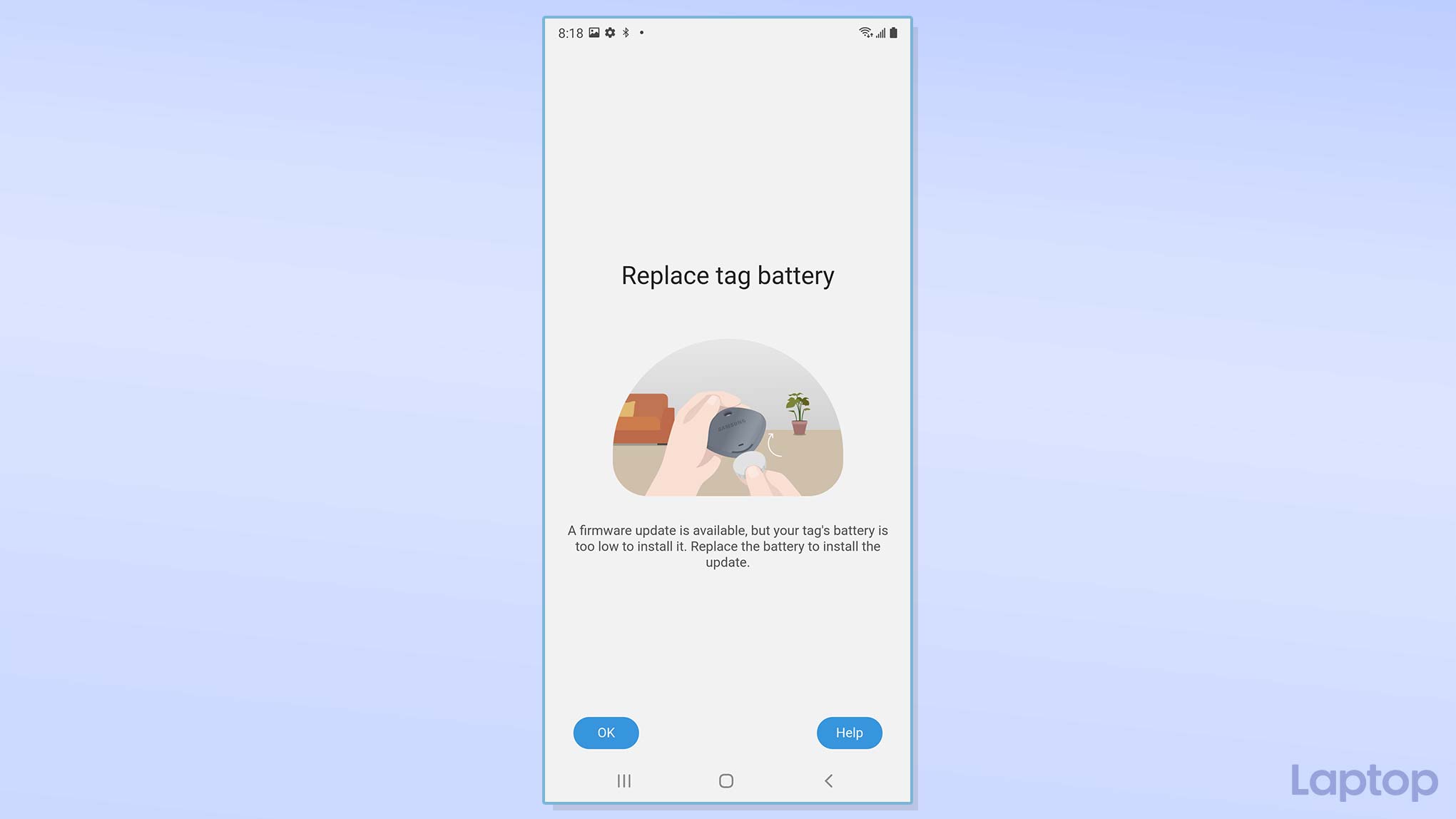
Samsung Galaxy SmartTag Plus performance
I spent two weeks using a Galaxy Note 20 Ultra phone and the SmartTags+ to play lost and found with tagged items. After stashing one in an obscure place in my house, yard or car, I would hunt for it. There was no need to simulate losing things because the SmartTag Plus ecosystem twice helped bring my lost keys back from a parallel universe. The tags were reliable and lowered the frustration level in my life.
As was the case with the original SmartTag, the SmartTag Plus has an exceptional range. In my 100-year old house, it stayed in contact with my Note 20 Ultra phone for 105-feet, five feet short of the original SmartTag’s 110-foot range, but more than three times farther than the AirTag’s 29-foot range. This translates to the SmartTag Plus being able to start finding a tag from just about any place in my house. The AirTag’s shorter range means that I needed to know what part of the house to start my search.
Whenever the phone and tag are within range, I got the tag to play its annoying tune, helping locate it and my stuff. In addition to two volume settings, SmartTag Plus has the choice of 10 tunes that are the equivalent of early ringtones. AirTags have neither of these options.
Samsung Galaxy SmartTag Plus search nearby
Like the Tile Mate and Apple AirTag, the SmartTag Plus has short and long-range modes that automatically kick in. The UWB-based Search Nearby mode took over at a distance of about 20-feet from the tag, although Samsung engineers say that it works as far as 49 feet depending on obstructions, like walls. Beyond that, the tag relied on Bluetooth location finding. It uses the original SmartTag’s green horseshoe indicator that filled in clockwise as I was getting hotter and displayed the distance on the top. At any time, I could have started the tag’s annoying music to help find it.
As I moved the phone around, it responded with helpful location hints, like “Signal Getting Stronger.” As the UWB technology took over from Bluetooth, it prompted me to try turning left or right to calibrate the sensors to help get a bead on the tag.
That’s just the start because the app can integrate video using augmented reality technology. After tapping the app’s “Find Using Camera” button, the camera’s view of the search area was overlaid with a helpful arrowhead pointing to the tag. The phone also provided haptic pulses that got more intense as I got closer to the tag, though it’s not as precise as the AirTag’s right and left pulses.
When I was a few feet away, the app went bonkers with an augmented reality show. Green dots swirled around the screen celebrating that the tag was within reach. It’s a nice demonstration of the technology and a treat but tends toward a showy overindulgence.
The SmartTag Plus has a couple more tricks up its digital sleeve that AirTag devices can’t touch. Press the SmartTag Plus’s button twice and the phone it’s connected to plays a tune. This came in handy when, unbeknownst to me, my phone fell under the car seat on a road trip. After freaking out, I let my keychain SmartTag Plus ping it, making the phone easy to find.
Samsung’s tags can send a prewritten text alert from your phone, making it the equivalent of an emergency beacon for the disabled or elderly. It can also turn home automation devices, like light bulbs and power outlets on or off.
Samsung Galaxy SmartTag Plus offline finding
Similar to Apple and Tile technology, once your phone is out of Bluetooth range, crowdsourcing takes over. It works with any owner of a recent Samsung Galaxy phone who has registered and agreed to help find the tags of others. Like AirTags, if there’re no responding phones in the area, you’re out of luck.
I started by enabling Offline finding in the phone’s Biometrics and Security screen; there’s also a way to do it from the SmartThings Find interface. That way, when a stranger’s phone encounters the tag’s signal, its location is securely sent to Samsung’s servers without them ever knowing about it. The data is then relayed to my phone where it shows up on the Find map with the explanation “Spotted by a nearby Galaxy device.”
To try it out, I “accidentally” left my tagged keys on a bench at a local train station and watched from afar. Within three minutes, the tag registered on the SmartThings Find’s map as “Spotted by a nearby Galaxy device.” I zoomed in on its exact location and retrieved the tag. If I were farther away, I could have used Google maps to navigate me there.
Samsung Galaxy SmartTag Plus security
Tag tracking involves a lot of data flying back and forth. Fortunately, Samsung has built security in from the start. The tags not only encrypt the location data so nobody can tap into the SmartTag Plus’s data stream, but the app randomizes the ID and encryption keys every 15 minutes for an additional layer of safety.
On the other hand, if a stalker drops a SmartTag Plus into your bag or car, they might have the ability to see where you are and have been. The recently added Unknown Tag Search part of the SmartThings app allowed me to scan the area for tags that aren’t registered to me. This effectively creates a creep shield.
It took a minute for the app to scan for foreign tags and it couldn’t find any at my home. Later, while out, it did find one nearby, though it was not surreptitiously left in my car to track me. The software is still in beta and included with the SmartThings interface.
Unfortunately, the SmartTag Plus stops short of lifting the owner’s information (if it’s entered) by using the Near Field Communications (NFC) abilities of a phone and there’s no requirement that the tag periodically reconnects with its host phone. AirTags do both of these security-related tasks.
Bottom line
Samsung’s Galaxy SmartTag Plus is a big step up from the original SmartTag tracking devices. It incorporates Ultra-Wide Band communication to help locate the tag and shows it on a phone’s map. Perfect for keys, a flash drive or luggage, the SmartTag Plus can be directly attached to a keyring or object so you won’t need to buy expensive accessories. The SmartTag Plus offers more customization options, the ability to ping your phone if it gets lost, and integrates video while searching. It also rewards you with augmented reality special effects when you find your tag.
As good as the SmartTag Plus is, it is not only bigger and heavier than both Apple’s AirTag or Tile’s Mate. And the SmartTag Plus’s IP53 durability rating falls short of the AirTag. Then, there’s the battery, which Samsung says should last for five months compared to Apple’s 1-year estimate for the AirTag’s battery. Finally, the UWB technology only works with recent Samsung phones: the Galaxy Z Fold 2, Note 20 Ultra or S21+ models. Older models can only use Bluetooth location.
At $40 each, the SmartTag Plus costs $10 more than an AirTag, but it’s worth it if you have a recent Samsung Galaxy phone and you’re the forgetful type. The SmartTag Plus has given me the peace of mind that comes with the ability to quickly lay my hands on any tagged item.
Samsung Galaxy SmartTag Plus Specs
| Size | 1.6 x 1.6 x 0.4 inches |
| Weight | 0.5 ounce |
| Range | 105-feet |
| Battery | Replaceable CR2032 |

